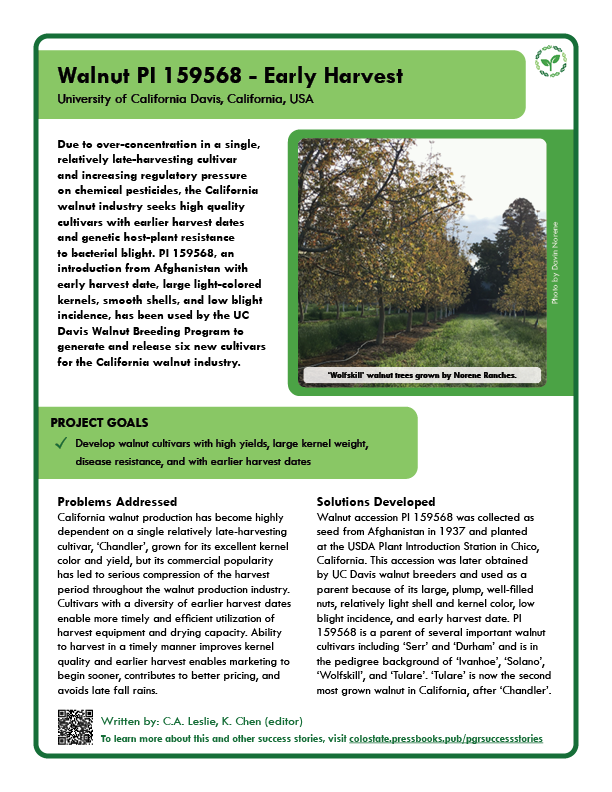Fruits and Nuts
Walnut PI 159568 – Early Harvest
CONVENTIONAL BREEDING OF NEW WALNUT CULTIVARS USING PI 159568
Charles A. Leslie
Department of Plant Sciences, UC Davis, One Shields Avenue, Davis, California 95616.
Corresponding author: caleslie@ucdavis.edu
OUTLINE
- Summary
- Problems addressed
- Solutions developed
- Impact
- Germplasm
- Additional resources
- References
- Chapter information
1. SUMMARY
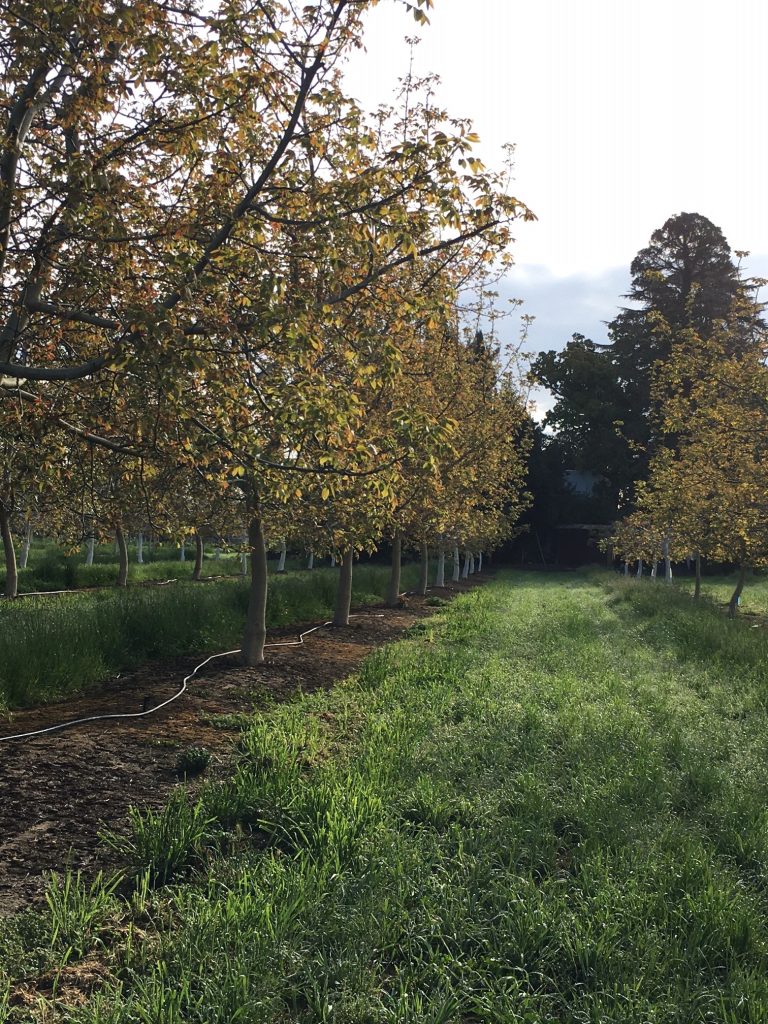
Due to over-concentration in a single, relatively late-harvesting cultivar and increasing regulatory pressure on chemical pesticides, the California walnut industry seeks high quality cultivars with earlier harvest dates and genetic host-plant resistance to bacterial blight. PI 159568, an introduction from Afghanistan with early harvest date, large light-colored kernels, smooth shells, and low blight incidence, has been used by the UC Davis Walnut Breeding Program to generate and release six new cultivars for the California walnut industry.
The goal was to develop walnut cultivars with high yields, large kernel weight, disease resistance, and with earlier harvest dates than the currently predominate cultivar, ‘Chandler’.
Download a printable fact sheet by clicking the image below.
2. PROBLEMS ADDRESSED
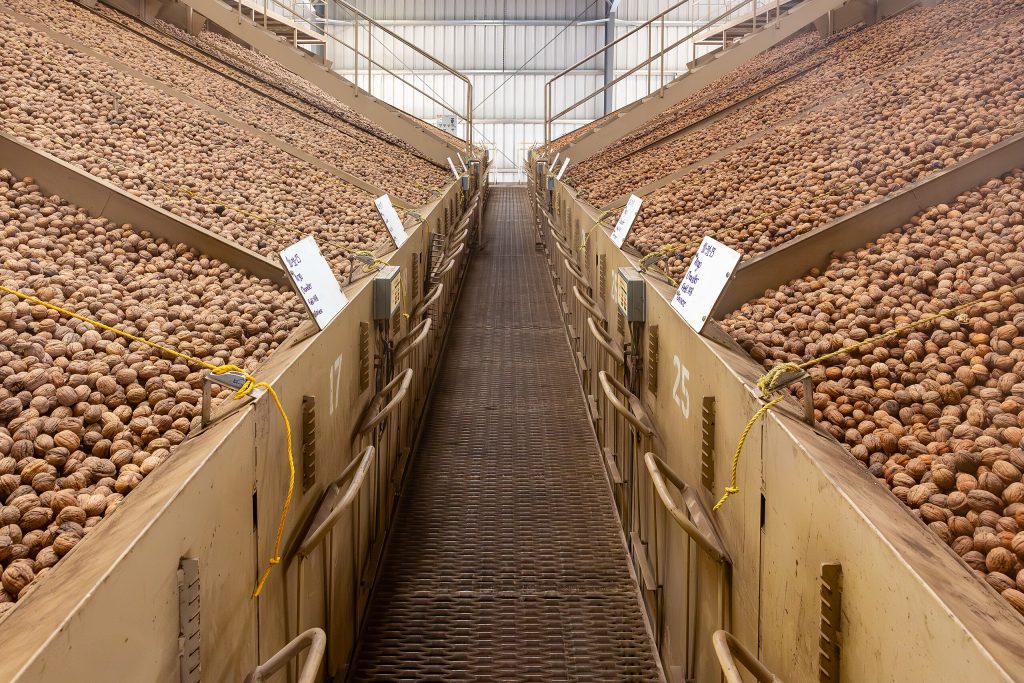
California walnut (Juglans regia L.) production has become highly dependent on a single relatively late-harvesting cultivar, ‘Chandler’, grown for its excellent kernel color and yield, but its commercial popularity has led to serious compression of the harvest period throughout the walnut production industry. Cultivars with a diversity of earlier harvest dates enable more timely and efficient utilization of harvest equipment and drying capacity. Ability to harvest in a timely manner improves kernel quality and earlier harvest enables marketing to begin sooner, contributes to better pricing, and avoids late fall rains. Genetic host-plant resistance to bacterial blight is desirable because chemical treatment is both very expensive and under increasing regulatory pressure.
3. SOLUTIONS DEVELOPED
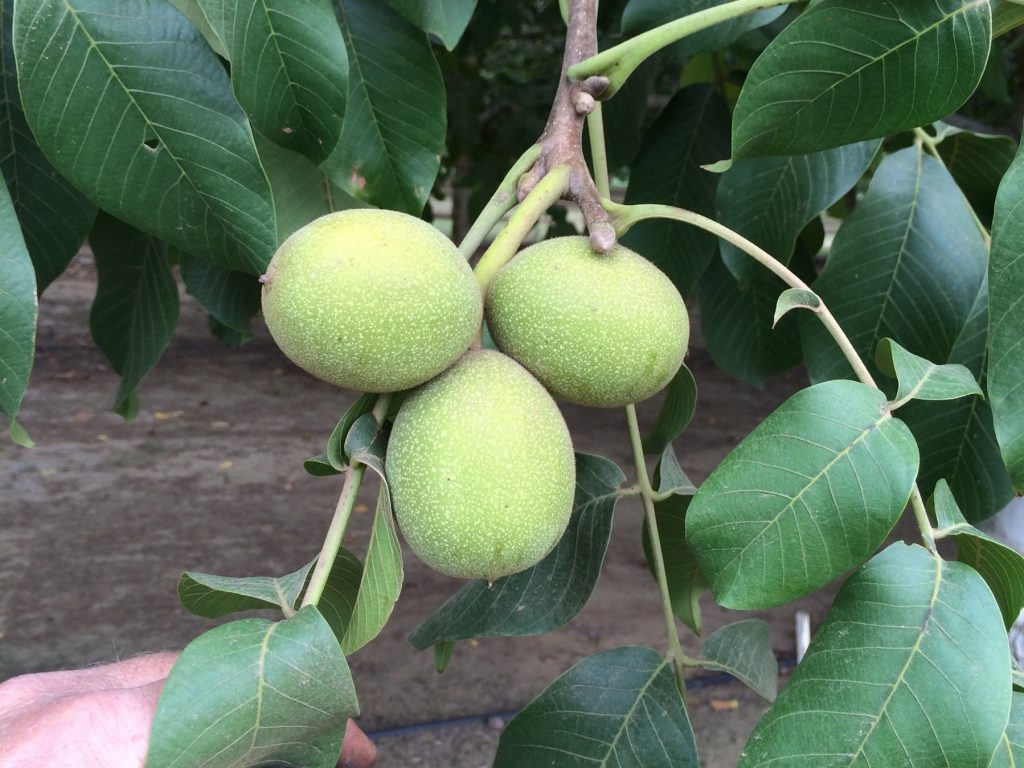
Walnut accession PI 159568 was collected as seed from the Paghman Botanical Garden near Kabul, Afghanistan in 1937 and planted at the USDA Plant Introduction Station in Chico, California. This accession was later obtained by UC Davis walnut breeders and used as a parent because of its large, plump, well-filled nuts, relatively light shell and kernel color, low blight incidence, and early harvest date. This accession continues to be used in the current UC Walnut Improvement Program as a parent for these traits and as a source of large kernel size in breeding for cherry leaf roll virus host-plant resistance.
PI 159568 is a parent of cultivar ‘Serr’, released in 1968, and ‘Durham’, released in 2016. It is a grandparent of ‘Tulare’ (‘Tehama’ x ‘Serr’), released in 1993, and is in the pedigree background of the more recently released early-harvesting cultivars ‘Ivanhoe’ (2010), ‘Solano’ (2012), and ‘Wolfskill’ (2023).
Collaborators involved in developing solution:
- Gene Serr, Harold Forde, Gale McGranahan, Charles Leslie, and Patrick J. Brown, UC Davis, Davis, California
4. IMPACT
According to the California Walnut Acreage Report, while ‘Chandler’ continues to be the leading walnut variety, ‘Tulare’ is the second most grown walnut in the state with 30,248 bearing acres (USDA NASS, 2024). More than 16% of the walnuts handled in CA last year came from cultivars with PI 159568 in their pedigree with ‘Tulare’ contributing the largest portion of this, followed by ‘Ivanhoe’, ‘Serr’, and ‘Solano’ (CDFA, 2024).
5. GERMPLASM
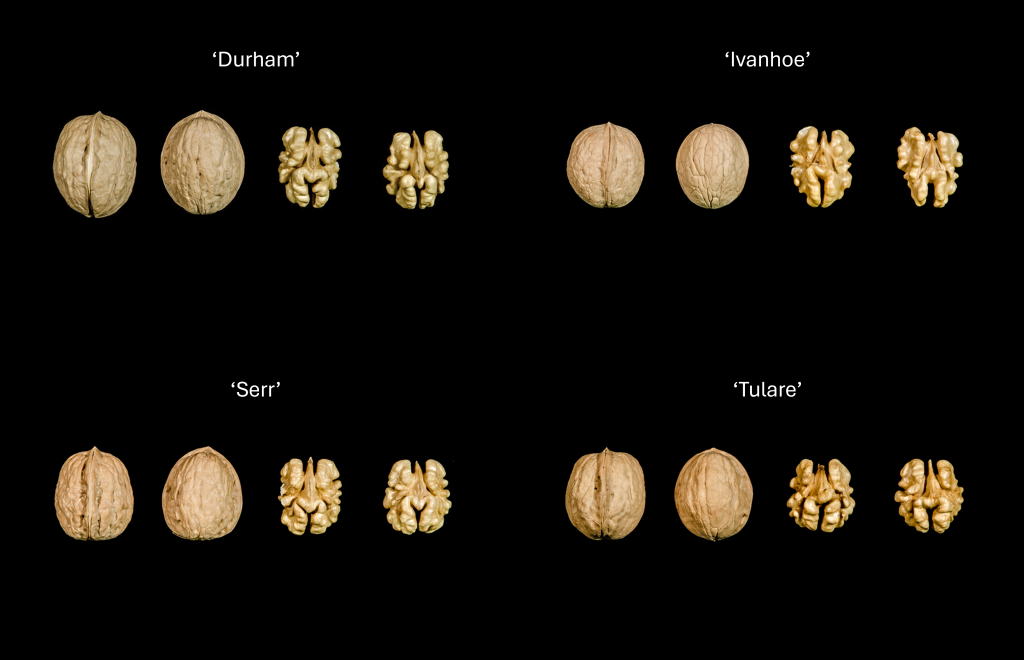
PI 159568 is a genebank accession maintained by the USDA National Plant Germplasm System. It has been used in the UC Davis Walnut Improvement Program to breed numerous commercially viable walnut cultivars including the following:
‘Serr’ is described as a large vigorous tree with early leafing and flowering, early harvest (early September), large, well-filled nuts, and high kernel yield (57% kernel, 8.3g).
‘Tulare’ is described as a vigorous tree with upright tree form, producing mid-season harvest (late September) with high yields.
‘Ivanhoe’ is a smaller tree released for the South Valley of California. It is blight susceptible, but has a very early harvest, high yield (57% kernel, 7.4g), and kernels with excellent color that easily halve.
‘Solano’ is described as a vigorous tree with leafing later than ‘Ivanhoe’, early harvest, precocious strong yield (54% kernel, 7.9g), and solid uniform shells.
‘Durham’ is a low blight walnut with an early- to mid-season harvest. Nuts are large (55% kernel, 8.4g) with a smooth attractive appearance, they fall easily at harvest time, shells are solid with good seals, and kernels are light colored and plump.
‘Wolfskill’ has kernel and shell traits very similar ‘Chandler’, the leading cultivar in the industry, but with better kernel fill and harvests two weeks earlier.
6. ADDITIONAL RESOURCES
More information can be found online at the UC Davis Fruit & Nut Research & Information Center.
7. REFERENCES
CDFA. 2024. Walnut/Raisin/Prune Report State Summary – 2023 Crop Year. California Department of Food and Agriculture. Download from: https://www.nass.usda.gov/statistics_by_state/California/Publications/Specialty_and_Other_Releases/Handler_Reports/2023wrp_1024.pdf
USDA NASS. 2024. 2023 California Walnut Acreage Report. USDA National Agriculture Statistics Service. Download from : https://www.nass.usda.gov/Statistics_by_State/California/Publications/Specialty_and_Other_Releases/Walnut/Acreage/202405walac.pdf
8. CHAPTER INFORMATION
Citation: Leslie CA. 2025. Walnut PI 159568 – Early Harvest. In: Volk GM, Chen K, Byrne P (Eds.) Plant Genetic Resources: Success Stories. Fort Collins, Colorado: Colorado State University. Date accessed. Available from https://colostate.pressbooks.pub/pgrsuccessstories/chapter/walnut-pi-159568-early-harvest/
Content originally submitted: March 25, 2024
Date of publication: February 24, 2025
USDA is an equal opportunity provider, employer, and lender. Mention of trade names or commercial products in this article is solely for the purpose of providing specific information and does not imply recommendation or endorsement by the U.S. Department of Agriculture.

